Iron rich baby food puree
Guide to Best Iron-Rich Foods for Babies, Toddlers & Kids
Home » Recipes by Age » 6-9 Months » Best Iron-Rich Foods for Babies, Toddlers & Kids
In this complete guide to iron-rich foods, we will go over everything you need to know about what iron is, how much baby, toddler, and kids need in their diets, lists of the best iron-rich foods, plus over 50 easy iron-rich recipes that contain both animal and plant-based iron sources.
Medically reviewed and co-written by Jamie Johnson, Registered Dietitian Nutritionist (RDN)
Iron Rich Foods for BabyConfused about what iron is and why your child needs it? Then you have come to the right place!
Iron is essential for growing babies, toddlers, and kids, as it helps with brain development. It’s also essential for producing red blood cells, which sends oxygen from our lungs to different parts of the body. While babies are born with enough iron stores to last them until 6 months of age, it is important to make sure you are providing enough iron in their diets after their iron reserves are depleted.
In this complete guide to iron, we will go over everything you need to know about what iron is, how much baby, toddler, and kids need in their diets, lists of the best iron-rich foods, plus over 50 easy iron-rich recipes that contain both animal and plant-based iron sources.
Check it out! Looking for even more great recipes for your little one, then be sure to check out my best-selling cookbook for even more information and recipes.
Iron Rich Foods Video
Watch to see what iron-rich foods are best for your baby or toddler.
Why is Iron Important?Iron plays a role in many different functions in our body. Most notably, it is important in producing red blood cells, which carry oxygen from our lungs to different parts of the body. Iron helps support the immune system and helps regulate body temperature. It’s also needed for brain development and maintaining healthy hair, skin, and nails, and making hormones.
Iron deficiency anemia happens when there is not enough iron in the body to properly make red blood cells. This can affect brain growth and development in children, which can lead to learning and behavioral problems. Some side effects of iron deficiency anemia are fatigue, weakness, irritability, pale skin, fast heartbeat, cold hands and feet, more frequent infections, brittle nails, headaches, poor appetite, or cravings for non-food items like ice or dirt.
Babies who drink cow’s milk before the age of 1 (which is not recommended) and toddlers who drink too much cow’s milk are at risk of developing iron-deficiency anemia because it can interfere with iron absorption. Ensure your toddler is not drinking more than 16-24 ounces a day of cow’s milk.
- Pale skin
- Weakness
- Fatigue
- Cold hands and feet
- Slowed growth and development
- Poor appetite or craving non-food items (like ice or dirt)
- Brittle nails
Most infants are usually screened for iron-deficiency anemia by 12 months of age, but if these symptoms sound like they are describing your baby, please contact your pediatrician.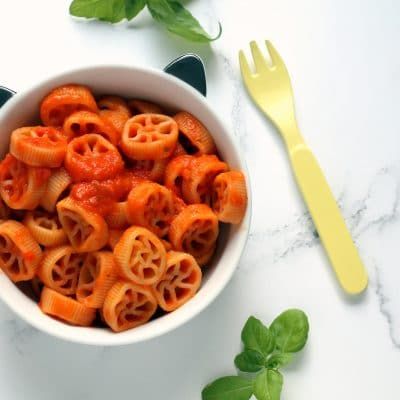
Babies usually have enough iron stores to get them through their first four-six months. If your baby is breastfed, it is important to give baby iron-rich foods when they are ready to start solids or give a supplement. This is because breast milk lacks iron. On the other hand, most infant formulas are fortified with iron, so this is not as much of a concern for these babies. In many cases, a diet full of iron-rich foods can raise iron levels to where they need to be. But your baby may need an iron supplement if her iron is low enough to warrant one, and your pediatrician feels that diet alone may not be enough to raise it. Your pediatrician may also recommend a supplement if your baby is premature, has a low birth weight or has a health condition that affects iron absorption.
How Much Iron Does my Baby or Child Need?Infants 0-6 Months: need .27 mg a day, which is usually met through breastfeeding or iron-fortified infant formula. After six months, natural iron stores are depleted and iron needs increase due to rapid growth of your child.
After six months, natural iron stores are depleted and iron needs increase due to rapid growth of your child.
Infants 7-12 Months: need 11 mg a day, which can be met with complementing breast milk or formula with iron-rich foods or an iron supplement.
Best Iron Rich Foods for BabiesFortunately, there are a ton of great iron-rich foods that are great for your baby as a puree or as a finger food if you are doing baby-led weaning.
- Beef, Pork, Lamb: ground, pureed, served on the bone for baby-led weaning or made into meatballs
- Dark Greens: great in a puree, smoothie or egg muffins
- Lentils: can be added to any puree, or gently mashed and handed to baby as a finger food
- Eggs: pureed, mashed, hardboiled, or scrambled
- Chicken, Turkey: pureed and added to favorite puree, chopped or in strips for blw
- Quinoa: great as baby cereal, or made into a mini muffin
- Beans, Lentils and Tofu: great option to add into a puree or gently mashed and handed to baby
- Broccoli: can be pureed or offered as a finger food
- Sweet Potatoes: can be pureed or offered as a finger food
- Oats: can make your own oatmeal or use instant oatmeal baby cereal
- Fortified Baby Cereal: easy store-bought option
Note: heme iron, most concentrated in animal sources, will be better absorbed by the body, as opposed to nonheme iron, which is mostly found in plant sources. If you do not follow a vegetarian or vegan diet, try to serve a mix of animal and plant sources of iron to your baby.
If you do not follow a vegetarian or vegan diet, try to serve a mix of animal and plant sources of iron to your baby.
Favorite Iron-Rich Recipes
With thousands of views, these recipes are our reader’s favorite recipes.
How to Serve Meat to Baby: Chicken Meatballs
5 stars (10 ratings)
These soft and tender chicken meatballs are a great finger food for babies. Plus, this post has 5 more simple meat recipe ideas for baby – puree, mashed into a chunky puree, served on the bone, shredded, or served in strips as a finger food or for baby-led weaning.
Get the recipe
Scrambled Eggs for Baby
5 stars (5 ratings)
These Easy Scrambled Eggs are the perfect finger-food for baby – soft, fluffy and delicious! Great for Baby-Led Weaning!
Get the recipe
Homemade Quinoa Baby Cereal (4+ months)
4.54 stars (52 ratings)
This smooth and creamy Homemade Quinoa Baby Cereal has an earthy and robust taste and is loaded with protein, fiber, iron, folate and magnesium. It’s great served as a meal itself or mixed with baby’s favorite fruit or vegetable puree.
It’s great served as a meal itself or mixed with baby’s favorite fruit or vegetable puree.
Get the recipe
Spinach Apple Baby Puree (Stage Two)
4.72 stars (38 ratings)
This Spinach Apple Baby Puree is high in iron and a perfect food to introduce to baby around 6 months. With the addition of cinnamon, ginger, and cloves, this stage two combination puree tastes amazing!
Get the recipe
Easy Spinach Muffins
5 stars (8 ratings)
These easy Spinach Muffins are a hit with babies, toddlers and kids! Made with wholesome ingredients and filled with green spinach!
Get the recipe
Best Iron Rich Recipes for Babies- Beef + Sweet Potato Baby Food Puree with Thyme
- Apple Kale Baby Food Puree
- The Best Sweet Potato Baby Food Puree
- Basic Beef Baby Food Puree
- Chicken, Squash + Cauliflower Baby Food
- Mango Kale Baby Food Puree with Ginger
- Spinach Apple Baby Puree
- Baby’s First Spinach Smoothie
- Apple, Spinach + Broccoli Baby Food Puree
- Eggs for Babies – 10 Easy Recipes
- Spinach Avocado Oatmeal Breakfast Cereal for Baby
- Oats, Spinach + Avocado Baby Food Puree
- The Best Broccoli Baby Food
- Sweet Potato for Baby – 6 Delicious Ways
- Spiced Sweet Potato Mini Muffins
- Strawberry Quinoa Breakfast Cereal
- Broccoli, Apple + White Beans for Baby
- Apple, Green Beans and Broccoli Baby Food Puree
- Banana, Tofu + Pear Baby Food Puree
- Easy Scrambled Eggs
- Basic Chicken Baby Food Recipe
- Homemade Quinoa Baby Cereal
- Apple, Carrot + Sweet Potato Baby Food Puree
- Grinch Mini Muffins
- Sweet Potato, Beets + White Beans Baby Food Puree
- 4 Breakfast Egg Muffins
- Kale Pesto Chicken Quesadilla
- Spinach Basil Pesto
- Freezer-Friendly Spinach Waffles
- Easy Blender Spinach Pancakes
- Grinch Mini Muffins
- Baby’s First Chicken Noodle Soup
- Eggs for Babies – 10 Easy Recipes
- Baby’s First Spinach Smoothie
- Broccoli, Apple + White Beans for Baby
- Easy Scrambled Eggs
- Chicken, Squash + Cauliflower Baby Food
- Sweet Potato Pancakes
- Cheesy Broccoli Quinoa Bites
- Monster Frozen Yogurt Bark
- Sweet Potato Wedges
- Chicken Parmesan Meatballs
- 4 Breakfast Egg Muffins
- Avocado Egg Toast
- Broccoli Egg Cups
- Mexican Sweet Potato Boats
- Roasted Broccoli Finger Food
- Mild Curry Chicken & Veggies
- Veggie-Loaded Hummus
- Sweet Potato for Baby – 6 Delicious Ways
- Spiced Sweet Potato Mini Muffins
- Easy Cheesy Garlic Broccoli Pasta
- Baked Seasoned Chicken Tenders
- Baked Seasoned Tofu Nuggets
Children ages 1-3 need 7 mg a day
Children ages 4-8 need 10 mg a day
Children ages 9-13 need 8 mg a day
For reference, here are some of the top foods my kids eat and how much iron they have:
- Peanut Butter: 0.
 6 mg
6 mg - Cereal (iron-fortified): 3.4 mg
- Chicken: 1.8 mg
- Eggs: 0.6 mg
- Spinach Smoothie: 2.7 mg
Thankfully there are plenty of good sources of iron in easy-to-find and low-cost foods that can be found at most grocery stores. And chances are you are probably already serving some iron-rich foods to your child. An easy way to make sure they are getting enough iron is to aim for them to eat 2-3 servings a day of any of the foods listed below.
While that may seem like a lot, remember that toddler and child portions are generally smaller than you would think, and it may be possible they are already eating the recommended amount.
Serving Sizes for Toddlers and KidsAccording to the American Academy of Pediatrics, these are the recommended serving size for a child between:
1 and 3 years of age
- Grains: 1/4 – 1/2 slice of bread, 1/4 cup of cereal, pasta or rice
- Vegetables: 1 tbsp for each year of age
- Fruit: 1/4 cup canned or 1/2 piece of fresh
- Dairy: 1/2 cup of milk, 1/2 oz cheese, or 1/3 cup of yogurt
- Protein: 1 oz (equal to two 1-inch cubes of solid meat or 2 tbsp of ground)
- Eggs: 1/2 any size, yolk and white
- Beans: 2 tbsp
4 and 6 years of age
- Grains: 1/2 slice of bread, 1/3 cup of pasta or rice, 1/2 dry cereal
- Vegetables: 1/4 cup cooked or 1/2 cup salad
- Fruit: 1/3 cup canned or 1/2 piece of fresh
- Dairy: 1/2 cup of milk, 1oz cheese, or 1/2 cup of yogurt
- Protein: 1oz (equal to two 1-inch cubes of solid meat or 2 tbsp of ground)
- Eggs: 1 egg any size, yolk and white
- Beans: 1/3 cup cooked
7 and 10 years of age
- Grains: 1 slice of bread, 1/2 cup of pasta or rice, 1 cup dry cereal
- Vegetables: 1/2 cup cooked or 1 cup salad
- Fruit: 1/3 cup canned or 1 piece of fresh
- Dairy: 1 cup of milk, 1oz cheese or 3/4 cup of yogurt
- Protein: 2-3oz of meat
- Eggs: 1 or 2 eggs
- Beans: 1/3 cup cooked
- Beef, Pork, Lamb
- Dried Fruit: apricots, raisins, prunes, dates, etc
- Dark Greens: spinach, kale, collard green, etc
- Lentils
- Eggs
- Chicken, Turkey
- Quinoa
- Beans, Lentils and Tofu
- Broccoli
- Sweet Potatoes
- Peanut Butter
- Fish and Shellfish
- Iron-Fortified Grains: such as cereals, bread or tortillas
- Kale Pesto Chicken Quesadilla
- Freezer-Friendly Spinach Waffles
- Baby’s First Chicken Noodle Soup
- Kale + Spinach with Apple Quesadilla
- Spinach Basil Pesto
- Eggs for Babies – 10 Easy Recipes
- Green Tropical Smoothie Popsicles
- Easy Blender Spinach Pancakes
- Easy Scrambled Eggs
- Sweet Potato Pancakes
- Mexican Sweet Potato Boats
- Chicken Parmesan Meatballs
- Easy Cheesy Garlic Broccoli Pasta
- Veggie-Loaded Hummus
- Cheesy Broccoli Quinoa Bites
- Mild Curry Chicken & Veggies
- Baked Seasoned Tofu Nuggets
- Healthy Chicken Nuggets with Green Bean “Fries”
- Black Bean Tostadas with Strawberry Salsa
- 3 Green Smoothies for Toddler + Kids
- Broccoli Egg Cups
To achieve maximum absorption, it is important to serve foods with vitamin C alongside foods with iron.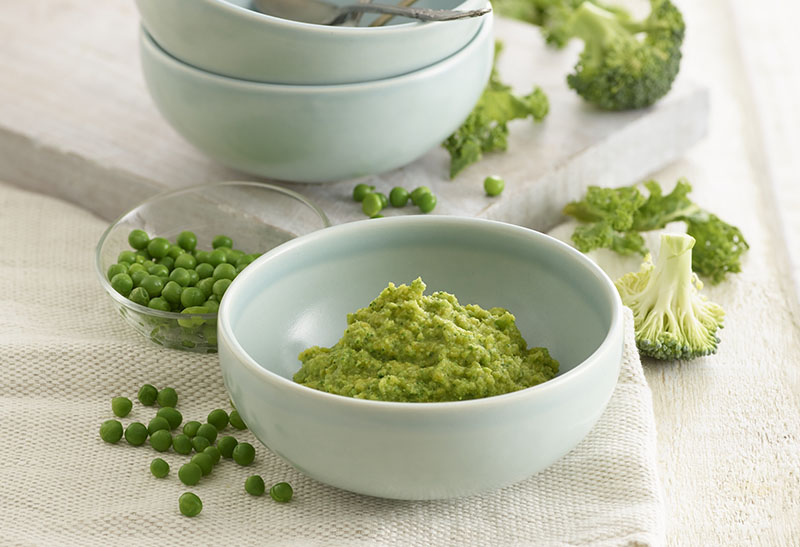 Here is a list of foods that are high in vitamin C.
Here is a list of foods that are high in vitamin C.
- Red and Green Bell Peppers
- Kiwi
- Oranges
- Strawberries
- Broccoli
- Kale
- Pineapple
- Cauliflower
- Mango
- Peas
- Tomatoes
Some great combinations would be to add in chopped red or green peppers while cooking ground beef or chicken, adding in oranges to a spinach smoothie, cooking broccoli and egg cups, serving a piece of fortified bread with peanut butter with a side of pineapple chunks as a snack, etc. There are plenty of easy options that allow you to get both vitamin C and iron into your child’s diet.
- 6 large eggs
- 1/4 cup milk, regular, almond, coconut, hemp, etc
- 1/2 cup broccoli, chopped
- 1/2 cup cheddar cheese, shredded
- salt and pepper to taste, optional
Prep: Heat oven to 375 degrees.
 Line 8 muffin tins with silicone muffin molds or generously spray with cooking oil to prevent sticking.
Line 8 muffin tins with silicone muffin molds or generously spray with cooking oil to prevent sticking.Whisk: In a medium bowl, whisk the eggs and milk together.
Stir: Add in the broccoli, cheese, salt and pepper and stir until combined.
Pour: Carefully pour the egg mixture into the muffin tins until 3/4 the way full.
Bake: place the muffin tin in the oven and bake for 20-25 minutes or until eggs have set and the cheese is golden brown.
Age: 6+ months
Storage: in an air-tight container in the fridge for up to 5 days or in the freezer for up to 2 months.
Reheat Frozen: to reheat the frozen egg cups, simply place on a microwave-safe plate and microwave in 30-second intervals until warm.
Stackable Glass Bowl Set
Muffin Pan
Silicone Muffin Cups
Bumkins Grip Plate
Did you make this recipe?
Tag @babyfoode on Instagram and hashtag it #babyfoode!
Pin Recipe Email a Friend
9 Best Iron-Rich Foods for Babies
When little ones start eating solid food, iron is essential to help their brains grow. Here the best iron-rich foods for babies that are happy and healthy!
1 / 10
Syda Productions/Shutterstock
Infants are typically born with enough stored-up iron to see them through the first few months of life—plus they get iron from breast milk or formula. As they begin to rely more on solid foods, though, it’s easy to become deficient.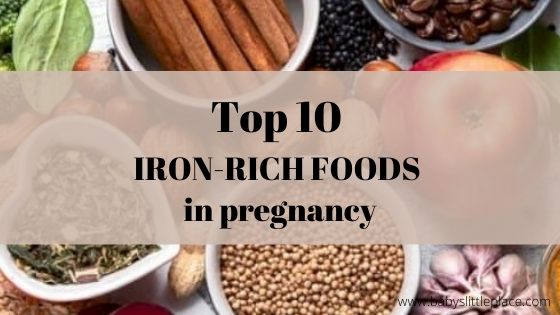 But growing babies need iron!
But growing babies need iron!
It’s what helps their bodies make hemoglobin, which sends oxygen to cells throughout important organs and muscles. It’s also what helps their brains develop normally.
Are you concerned your baby’s iron levels are low? Curious about how to boost iron through diet? Here’s a closer look at our recommended iron-rich foods for babies.
2 / 10
colnihko/Shutterstock
Dark Greens
Leafy greens such as kale and spinach are great sources of iron for your wee one. You can saute them in oil and puree them with other cooked vegetables or meats to enhance taste. You can also throw them into fruit smoothies. Bonus: The vitamin C in fruits such as oranges or strawberries enhances iron absorption.
Here’s how to cook kale—and make it delicious—for the whole family.
3 / 10
SMarina/Shutterstock
Lentils
There’s a good reason lentils are beloved by vegetarians and meat-eaters alike. They’re not only versatile and delicious, but they’re also one of the best plant-based sources of iron available. Use cooked lentils in a wide range of purees to give baby an iron boost.
They’re not only versatile and delicious, but they’re also one of the best plant-based sources of iron available. Use cooked lentils in a wide range of purees to give baby an iron boost.
4 / 10
LightField Studios/Shutterstock
Eggs
The yolk of an egg is naturally high in iron. It’s also fairly simple to cook and serve to your child. Offer it alongside some orange juice to give your child a boost of vitamin C as well as small taste of adult-style breakfasts to come.
Want another reason to give your baby eggs? Check out this research that suggests eggs are baby brain food!
5 / 10
casanisa/Shutterstock
Beef
When most people think about foods rich in iron, they think of meat. Just 3.5 ounces contain 15% of an adult’s recommended daily intake. To make beef a baby-friendly food, try cooking some until soft and pureeing with a little water to make it blend smoothly.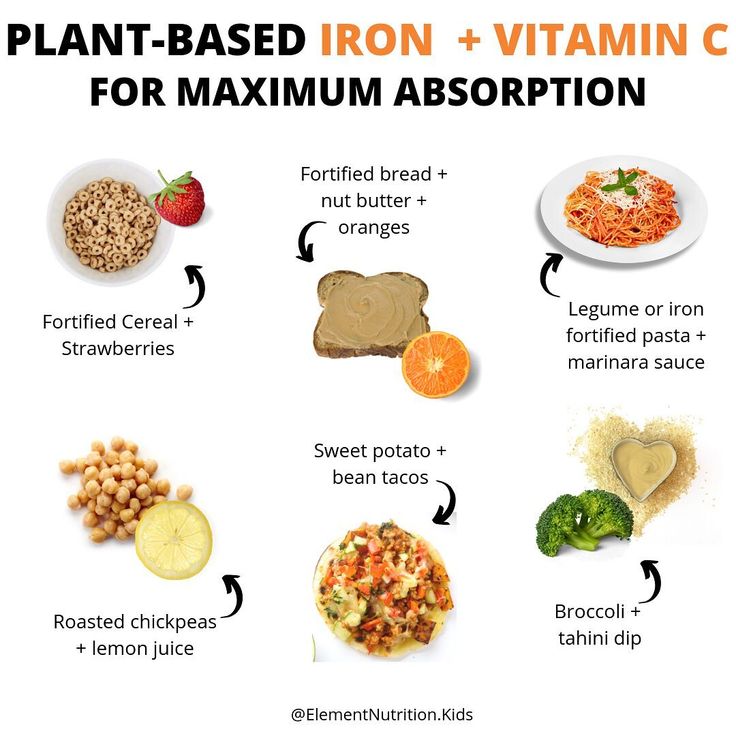 Serve with one of these homemade baby food recipes.
Serve with one of these homemade baby food recipes.
6 / 10
New Africa/Shutterstock
Quinoa
Certain grains are good sources of iron, including quinoa, a gluten-free seed that can be cooked like rice. Adding cooked quinoa to purees is a great way to get a little more iron in your baby’s routine. Just one cup contains 2.8 milligrams of iron! The rest of the family will love these healthy quinoa recipes.
7 / 10
denio109/Shutterstock
White Beans
Like other legumes, white beans are an excellent source of iron and, thanks to their mild taste, an easy sell to most babies. Cook them until soft, and puree solo or with other foods to create iron-rich baby food for your little one.
8 / 10
nadi555/Shutterstock
Liver
Hear us out: Of any type of meat, beef liver offers the highest amount of iron per serving, making it a perfect choice for boosting iron intake efficiently. Because the idea of liver may not be as naturally appealing as other foods, try combining it with other ingredients or flavors for a more palatable taste.
Because the idea of liver may not be as naturally appealing as other foods, try combining it with other ingredients or flavors for a more palatable taste.
9 / 10
MarkoBr/Shutterstock
Broccoli
The cruciferous vegetable broccoli is more than a good source of folate, fiber and vitamins C and K. It’s also another whole food that naturally contains iron. Whether you steam, saute or roast this vegetable, pureeing it makes it a great iron-rich food to try for your baby.
10 / 10
Amallia Eka/Shutterstock
Sweet Potatoes
What’s great about sweet potatoes is that they not only contain iron, but also vitamin C, which makes all that iron easier for baby’s body to absorb. Even better, pureed sweet potatoes are usually appealing to babies thanks to their natural sweetness.
Originally Published: May 20, 2019
Shanna Mallon
Shanna Mallon is an experienced copywriter and food blogger with a master's degree in Writing. She likes tested recipes, organized refrigerators and the pleasure of a good bite.
She likes tested recipes, organized refrigerators and the pleasure of a good bite.
Iron products for children
Proteins, fats and carbohydrates are the main nutrients that are the building blocks and source of energy for all living things. But no less significant biological role belongs to minerals. Despite their insignificant presence in the human body, they take part in numerous reactions and metabolic processes, therefore they are absolutely necessary for normal life in any of the periods of life. Minerals are part of enzymes, hormones and other biologically active molecules that, like conductors, direct and regulate metabolic processes. 81 chemical elements have been found in the human body, and the stability of their regular intake is a prerequisite for health. Minerals are not synthesized on their own, they come from outside and are absorbed with food and water. Their sufficient amount is especially important during periods of active growth and development, which determines the importance of a rational and balanced diet for pregnant women and children, because a deficiency of even one of the elements can adversely affect health. nine0003
nine0003
Content: Hide
- Lack of iron
- manifestations of iron deficiency anemia
- Causes of deficiency
- Prevention of deficiency
- enriched products
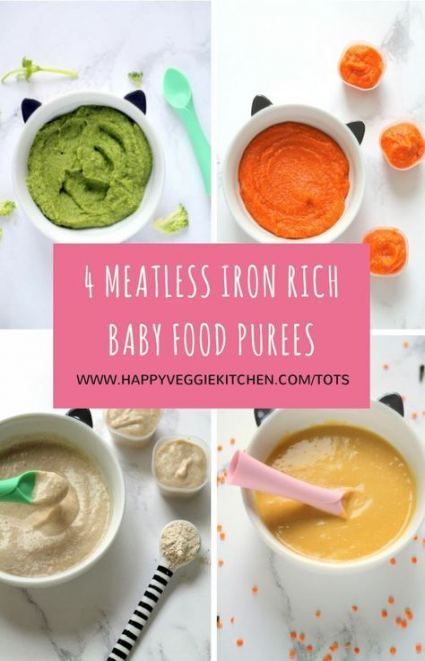 The main part of iron is found in the blood in the structure of hemoglobin. This protein binds with oxygen to transport it to every cell of the body, providing tissue respiration, and hence the operation of all organs and systems. Then, having given up oxygen, hemoglobin combines with carbon dioxide and transports it for subsequent release by the lungs from the human body. It is hemoglobin that colors blood red. In addition to blood cells, iron is found in the bone marrow, liver, muscles, and spleen. This mineral is part of enzymes that accelerate DNA synthesis during cell division. nine0003
The main part of iron is found in the blood in the structure of hemoglobin. This protein binds with oxygen to transport it to every cell of the body, providing tissue respiration, and hence the operation of all organs and systems. Then, having given up oxygen, hemoglobin combines with carbon dioxide and transports it for subsequent release by the lungs from the human body. It is hemoglobin that colors blood red. In addition to blood cells, iron is found in the bone marrow, liver, muscles, and spleen. This mineral is part of enzymes that accelerate DNA synthesis during cell division. nine0003 IMPORTANT! The effective operation of these structures is especially necessary during periods of growth and maturation of organs. Iron is also a structural component of about 50% of the enzymes involved in energy metabolism, as well as in the reactions of neutralizing foreign substances in the liver. Without it, the normal functioning of brain cells is impossible.
Iron deficiency
Unfortunately, insufficient intake of minerals is a common phenomenon in the modern world among both adults and children.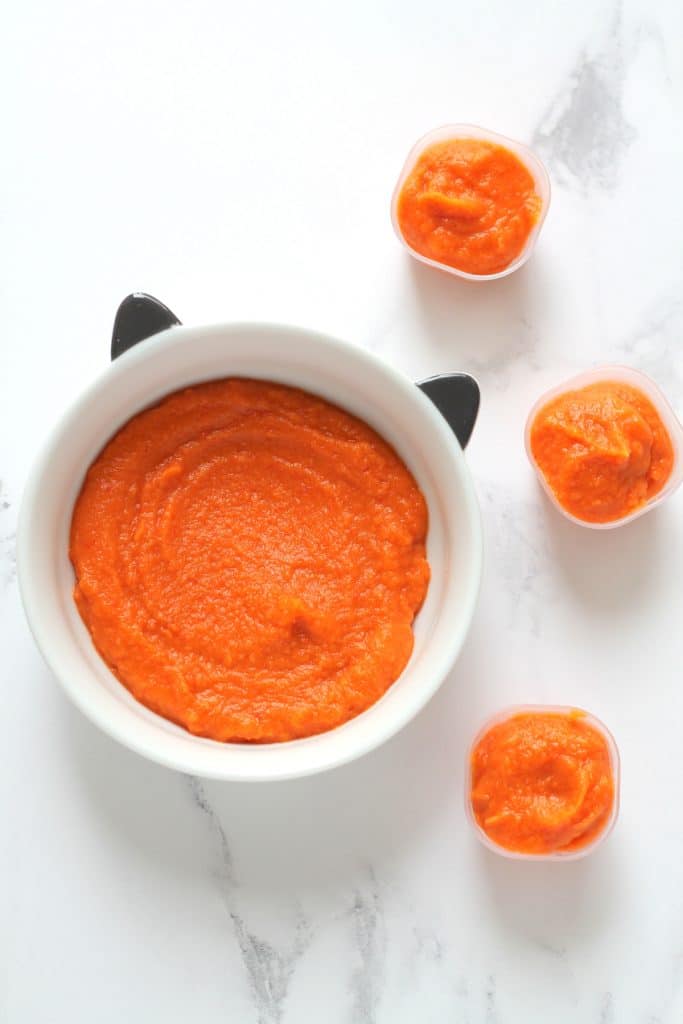 Iron deficiency disrupts the work of all body cells, especially if their functioning requires intensive metabolism and oxygen supply. The changes concern the main organs and systems, manifested by a decrease in the activity of all processes and the ability to withstand the negative impact of external factors. A late and already pronounced manifestation of iron deficiency is the development of anemia, in the common people - anemia. In this condition, the amount of hemoglobin decreases, and the formation of altered erythrocytes (red blood cells) also occurs - they become pale and reduced in size. In humans, the total iron content in the blood serum decreases. nine0003
Iron deficiency disrupts the work of all body cells, especially if their functioning requires intensive metabolism and oxygen supply. The changes concern the main organs and systems, manifested by a decrease in the activity of all processes and the ability to withstand the negative impact of external factors. A late and already pronounced manifestation of iron deficiency is the development of anemia, in the common people - anemia. In this condition, the amount of hemoglobin decreases, and the formation of altered erythrocytes (red blood cells) also occurs - they become pale and reduced in size. In humans, the total iron content in the blood serum decreases. nine0003
Manifestations of iron deficiency anemia
The symptoms of this disease are varied and not always specific. In infancy, manifestations may be blurred, and the main signs of iron deficiency will be insufficient growth or a delay in the formation of motor skills, deviations in neuropsychic development. In older children, iron deficiency can be manifested by problems in assimilation of information and learning, low concentration of attention and behavioral anomalies. nine0003
nine0003
IMPORTANT! With a significant lack of iron, changes in the skin and mucous membranes are often observed: pallor and dryness, the appearance of cracks on the arms, legs and around the mouth, layering and increased fragility of nails, dull hair. Babies often develop painful sores in the oral cavity and changes in the tongue - manifestations of stomatitis.
Other typical symptoms of this micronutrient deficiency are muscle weakness, irritability and sleep disturbances. The child quickly gets tired, does not cope well with the usual load for his age. People with iron deficiency anemia often have altered taste and appetite, and may also develop a desire to eat inedible items such as chalk and lime. nine0003
Causes of deficiency
In young children and pregnant women, the main factor in iron deficiency in the body is its low intake from food. Indeed, due to intensive growth and development, first intrauterine, and then independent, the need for this trace element is very high. That is, in these groups, iron deficiency is always associated with its negative balance - insufficient intake compared to the need for daily expenditure. This leads first to depletion from the depot, and then to the depletion of the mineral reserves in the body. Why is this happening? In the modern life of an urban person, refined foods are often used in nutrition, and food is depleted in vitamins and minerals. nine0003
That is, in these groups, iron deficiency is always associated with its negative balance - insufficient intake compared to the need for daily expenditure. This leads first to depletion from the depot, and then to the depletion of the mineral reserves in the body. Why is this happening? In the modern life of an urban person, refined foods are often used in nutrition, and food is depleted in vitamins and minerals. nine0003
IMPORTANT! Iron deficiency during pregnancy and then during breastfeeding is transmitted to the infant from the mother and can have an adverse and even sometimes irreversible effect on his health. Therefore, it is extremely important that the nutrition of a pregnant and lactating woman is complete, containing all the necessary nutrients in sufficient quantities and enriched with useful substances.
It is impossible to neglect the recommendations for taking vitamin-mineral complexes during pregnancy and lactation, since very often it is not possible to make a woman's diet sufficient and balanced. On the contrary, babies in their first year of life get everything they need from food, without the use of special preparations for the prevention of deficient conditions. In the first half of the year, the main role in the nutrition of the child belongs to breast milk, the main source of essential substances, vitamins and minerals, including iron. However, by the sixth month of life, exclusively natural feeding can only satisfy the child's needs for iron by 6-7%. At the same time, the nutrition of the mother at this age does not significantly affect the supply of this trace element to the baby. The main task is not to delay and start the introduction of complementary foods on time to meet the high demand for this element in the second half of life. nine0003
On the contrary, babies in their first year of life get everything they need from food, without the use of special preparations for the prevention of deficient conditions. In the first half of the year, the main role in the nutrition of the child belongs to breast milk, the main source of essential substances, vitamins and minerals, including iron. However, by the sixth month of life, exclusively natural feeding can only satisfy the child's needs for iron by 6-7%. At the same time, the nutrition of the mother at this age does not significantly affect the supply of this trace element to the baby. The main task is not to delay and start the introduction of complementary foods on time to meet the high demand for this element in the second half of life. nine0003
Deficiency prevention
What foods are rich in this micronutrient, and what complementary foods for children can be sources of iron? The leader in the amount of iron in the composition is food of animal origin, its highest content is in meat, fish and eggs. Different types of meat products differ in the presence of minerals and vitamins.
Different types of meat products differ in the presence of minerals and vitamins.
IMPORTANT! Thus, the highest content of iron is found in red meat - veal and beef, and there is also a lot of it in the liver of animals. In addition, they contain iron in an easily digestible heme form, which increases the absorption of this element in the intestine. nine0003
Modern industrial technologies for the production of baby food allow the production of products with a very high degree of grinding - a homogeneous consistency. Therefore, meat complementary foods can be safely included in the diet of babies from 6 months old, and this is one of the fundamental innovations in the nutrition of children in the first year of life. Previously, meat complementary foods were introduced only to children older than 7 months.
Other sources
Are there iron-rich foods among plant foods? Yes, this trace element is present in legumes, nuts and seeds, grains, and some types of greens (parsley, thyme, lettuce). But compared to meat products, the content of iron in them, as well as the degree of its absorption in the intestines, is lower. Among the foods of plant origin, buckwheat should be singled out, which is used in whole grain form and is several times superior to other crops in terms of iron content. nine0003
But compared to meat products, the content of iron in them, as well as the degree of its absorption in the intestines, is lower. Among the foods of plant origin, buckwheat should be singled out, which is used in whole grain form and is several times superior to other crops in terms of iron content. nine0003
IMPORTANT! Therefore, at the age of 4–5 months, when deciding on the start of the introduction and choice of complementary foods, preference should be given to porridge, especially in babies at risk of developing iron deficiency anemia and poorly gaining weight. In addition, in cases of late start of the introduction of complementary foods, this is also a good choice as a start.
And buckwheat at this age should be singled out as a priority among cereals due to the high content of vegetable protein and rich mineral and vitamin composition. Another important feature that must be taken into account when compiling a menu for babies is the fact that when meat puree is combined with grains, the degree of absorption of non-heme iron from a vegetable source increases and its biological value increases. Therefore, in children older than 6 months, cereal complementary foods are included in the diet not only in the form of milk porridge, but also as a component of meat and vegetable dishes, in which meat is balanced with dairy-free porridge. nine0003
Therefore, in children older than 6 months, cereal complementary foods are included in the diet not only in the form of milk porridge, but also as a component of meat and vegetable dishes, in which meat is balanced with dairy-free porridge. nine0003
Fortified foods
Despite the high nutritional value and varied vitamin and mineral composition of natural products recommended in baby food, the content of micronutrients in the finished meal does not always satisfy the high need for these substances at an early age.
IMPORTANT! The way out of this situation is to use in the nutrition of babies products that are additionally enriched with biologically active substances that are vital during periods of active growth and development. An example of such specialized products is the line of instant cereals Bebi Premium. Their composition is developed in accordance with the age characteristics of babies of the first year of life, enriched with the most necessary vitamins and minerals for normal physical and mental development in the recommended amount and ratio. nine0003
nine0003
All cereals and instant biscuits for children from this manufacturer are enriched with iron, which covers from 10 to 30% of the recommended daily requirement for this trace element and is an effective prevention of the development of iron deficiency conditions. Preparation of complementary foods of the Bebi Premium line does not require aggressive cooking, which allows you to save biologically active substances in the most useful and easily digestible form.
Iron rule: the benefits of mashed meat
Why iron is so important
Surprisingly, there is very little iron in the human body: an adult has only 4-6 g of it! However, the role of this element is difficult to overestimate. At the same time, most of us only know that iron is necessary for the synthesis of hemoglobin, which, in turn, helps to provide all human organs and tissues with oxygen. But other than that, iron:
- participates in the work of the brain, and the neuropsychic development of the child directly depends on iron ;
- is necessary for the functioning of the immune system and is intensively consumed in any infectious disease;
- is needed for muscle contraction.

Where iron comes from: baby food
The only source of iron for an adult is his diet. But nature took care of babies separately: even in the womb, the baby receives a certain supply of iron, which is enough for him for the first 4-6 months of life. There is little iron in breast milk and, even if this iron is perfectly absorbed, it would be very difficult for the baby without additional reserves. nine0003
By 5 - 6 months of life, this natural supply of iron in the baby will be exhausted. At this moment, mothers should connect additional forces - the right complementary foods.
Small amounts of iron are found in vegetables and fruits, as well as in some cereals. Moreover, many manufacturers additionally enrich their products with iron. But the difficulty is that iron from these products of plant origin, or, as it is also called, non-heme iron, is poorly absorbed: for example, from vegetables and fruits, the baby will receive only 2 - 3% of the iron that these foods are rich in! nine0003
That is why meat purees are of particular importance in the nutrition of a child. Meat is a source of animal protein and easily digestible heme iron. So, from beef, up to 23% of the iron contained in it is absorbed. Therefore, doctors recommend starting to introduce meat purees into the baby's diet immediately after the child is six months old!
Meat is a source of animal protein and easily digestible heme iron. So, from beef, up to 23% of the iron contained in it is absorbed. Therefore, doctors recommend starting to introduce meat purees into the baby's diet immediately after the child is six months old!
How to introduce meat complementary foods?
- The introduction of meat into the diet of crumbs is recommended to start with beef, rabbit, veal or poultry - chickens or turkeys. Later, lean pork and lamb are added to the baby's menu. nine0010
- From 8 months, offal can also be introduced into the baby's diet - tongue, liver and heart, which are also known for their high iron content.
- The baby's menu can also include mashed potatoes that combine meat and vegetables. Such purees are called meat and vegetable purees. As nutrition experts note, if you combine meat with vegetables and cereals, then both iron from meat and iron from vegetables are better absorbed! This is facilitated by vitamin C and organic acids contained in vegetables.
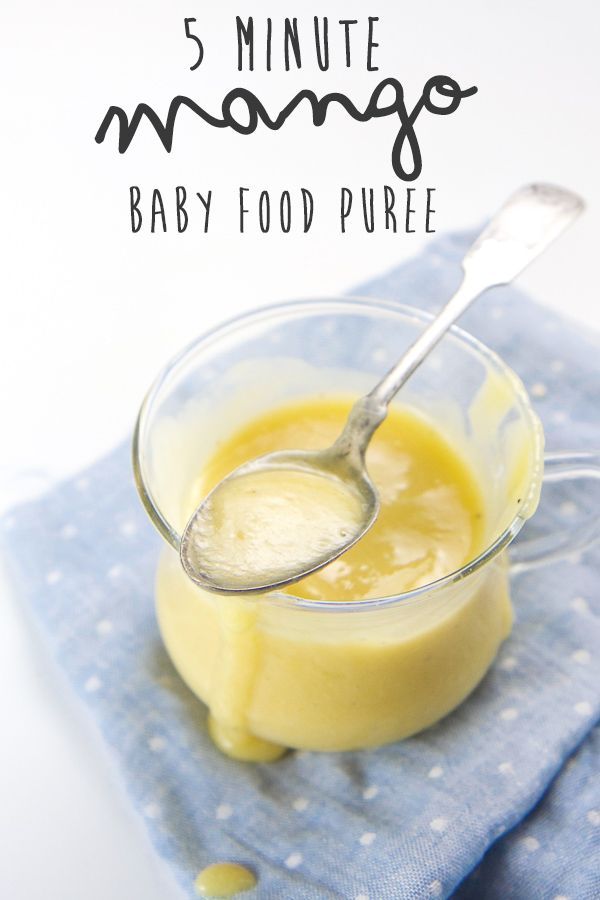 nine0107
nine0107 - High quality and safety of raw materials
- Guaranteed composition of meat puree for macro and micronutrients,
- Free of colorants, flavors and preservatives, nine0009 Complete safety for the baby, which cannot be said with certainty about meat bought in a store or on the market!
- Optimal consistency (degree of grinding), which is suitable for a six-month-old baby, since it creates a minimum burden on the child's digestive tract and which cannot be achieved at home
Which meat supplement to choose?
For the first meat complementary foods, leading pediatricians in Russia recommend the use of commercially produced complementary foods. Among the advantages of commercially produced complementary foods are:
What should be the consistency of the meat puree?
Depending on the age of the baby, the mother can choose for him industrial-scale meat complementary foods of a suitable consistency.











